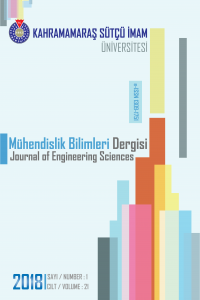Şebekeden Bağımsız Bir PV Sistemin TRNSYS ile Gerçek Zamanlı Modellenmesi
Abstract
Bu çalışmada TRNSYS programı ile
şebekeden bağımsız bir PV sistemi modellenmiştir. Çalışmada Ankara ilinin iklim
verisi kullanılmış ve uygulaması yapılan sistemin matematiksel modeli
oluşturulmuştur. Değişkenlerin programa nasıl entegre edildiği gösterilerek,
modüllerin çalışma prensipleri hakkında ayrıntılı bilgi verilmiştir. TRNSYS programı
yenilenebilir enerji konusunda kullanıcısına görsel modelleme imkânı sunan ve
esnek tasarım özellikleri sayesinde yaygın olarak kullanılan bir programdır.
Keywords
References
- D.F. Al Riza, S.I. Gilani and M.S. Aris, “Measurement and Simulation of Standalone Solar PV System for Residential Lighting in Malaysia”, Journal of Hydrocarbons Mines and Environmental Research, vol. 2, no. 1, pp 6-12, 2011.
- Timothy U. Townsend, “A Method for Estimating the Long-Term Performance of Direct-Coupled Photovoltaic Systems”, M. S. Thesis – Solar Energy Laboratory, University of Wisconsin, Madison: 1989
- Feng Shao, “Measurement and Simulation on Stand-alone Photovoltaic Systems” M.S Thesis – University of Nanjing: 2007
- J. H. Eckstein, Detailed Modeling of Photovoltaic Components, M.Sc. Thesis,Solar Energy Laboratory, University of Wisconsin-Madison, 1999.
- TRNSYS 16 - A Transient System Simulation Program Volum5 Mathematical Reference, Solar Energy Laboratory, University of Wisconsin-Madison, 2006.
Modelling a Real Time Stand-Alone PV System by Using TRNSYS
Abstract
In
this study a real time stand-alone PV system is modelled by using TRNSYS
program. The weather data of Ankara is used in the study and mathematical model
of applied system is obtained. By illustrating how variables are integrated to
program, operation principles of modules are explained in detail. TRNSYS
program provides user a visual modelling about renewable energy sources and it
is widely used due to flexible design features.
Keywords
References
- D.F. Al Riza, S.I. Gilani and M.S. Aris, “Measurement and Simulation of Standalone Solar PV System for Residential Lighting in Malaysia”, Journal of Hydrocarbons Mines and Environmental Research, vol. 2, no. 1, pp 6-12, 2011.
- Timothy U. Townsend, “A Method for Estimating the Long-Term Performance of Direct-Coupled Photovoltaic Systems”, M. S. Thesis – Solar Energy Laboratory, University of Wisconsin, Madison: 1989
- Feng Shao, “Measurement and Simulation on Stand-alone Photovoltaic Systems” M.S Thesis – University of Nanjing: 2007
- J. H. Eckstein, Detailed Modeling of Photovoltaic Components, M.Sc. Thesis,Solar Energy Laboratory, University of Wisconsin-Madison, 1999.
- TRNSYS 16 - A Transient System Simulation Program Volum5 Mathematical Reference, Solar Energy Laboratory, University of Wisconsin-Madison, 2006.
Details
| Primary Language | Turkish |
|---|---|
| Subjects | Electrical Engineering |
| Journal Section | Electrical and Electronics Engineering |
| Authors | |
| Publication Date | March 30, 2018 |
| Submission Date | October 20, 2017 |
| Published in Issue | Year 2018 Volume: 21 Issue: 1 |


